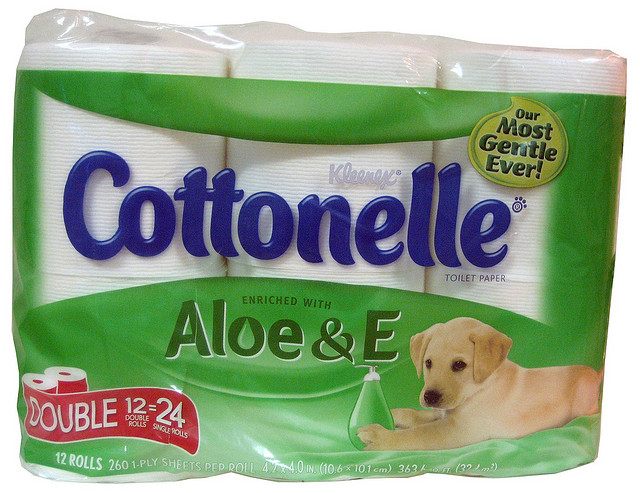Photo: Flickr.com/theimpulsivebuy
About Kimberly-Clark Corporation
Kimberly-Clark Corporation employs 58,000 people around the world providing consumer products and health care. The company’s history goes back to 1870 when Kimberly, Clark and Company and Scott Paper Company are established in Neenah, Wisconsin and Philadelphia, Pennsylvania respectively. From 1870 – 1990, the companies expanded with new products serving consumers first in the United States and eventually expanding to consumers around the world. In 1990, the two companies merged.
Kimberly-Clark is organized into four operating divisions: (1) Personal Care, which markets brands such as Huggies Diapers, Pull-Ups, Kotex, Depend, and others; (2) Consumer Tissue, which handles brands including Kleenex, Scotts, Viva, and Cottonelle; (3) K-C Professional, which is responsible for delivering sanitary and cleaning products to workplaces; and (4) Health Care, which offers surgical and infection prevention products for the operating room, and medical devices to handle pain management, and digestive and respiratory health.
The company is a member of the S&P 500 index and trades under the ticker symbol KMB.
Kimberly-Clark Corporation’s Dividend and Stock Split History
Kimberly-Clark first began increasing dividends in 1973, meaning that in 1997 the company met the Dividend Aristocrat criteria of 25 years of dividend growth. The company usually announces dividend increases in January, with the stock going ex-dividend in March.
Kimberly-Clark has compounded its payout at an average rate of 5.3% over the last 5 years and 6.1% over the last 10 years.
Kimberly-Clark has split its stock 2 for 1 four times: in May 1984, May 1987, January 1992, and April 1997. An investor that purchased one share of stock in 1973 would now have 16 shares of Kimberly-Clark stock.
Kimberly-Clark Direct Purchase and Dividend Reinvestment Plans
Kimberly-Clark has both direct purchase and dividend reinvestment plans. Investors interested in participating in either of these plans can find information at ComputerShare’s Investment Plan site. The minimum amount that an investor can directly purchase through the plan is $250 for one-time purchases. For direct debit purchases, the minimum drops to $50 provided at least 5 monthly purchases are made.
The plans have both purchase and sales fees. There is a $10 initial setup fee. Stock purchases through the direct purchase plan are 5 cents per share. The transaction fee for the direct purchase plan is $5 for check deposits and $2.50 for purchases through direct debit. Kimberly-Clark pays all fees when reinvesting dividends.
When selling shares, an investor will pay 15 cents per share sold along with a transaction fee that varies depending on the type of sale (i.e., market order, batch order or day limit order). Investors can minimize fees by buying and selling shares in larger quantities.
Helpful Links
Kimberly-Clark Corporation’s Investor Relations Website
Current quote and financial summary for Kimberly-Clark Corporation (finviz.com)
Information on the direct purchase and dividend reinvestment plans for KMB
